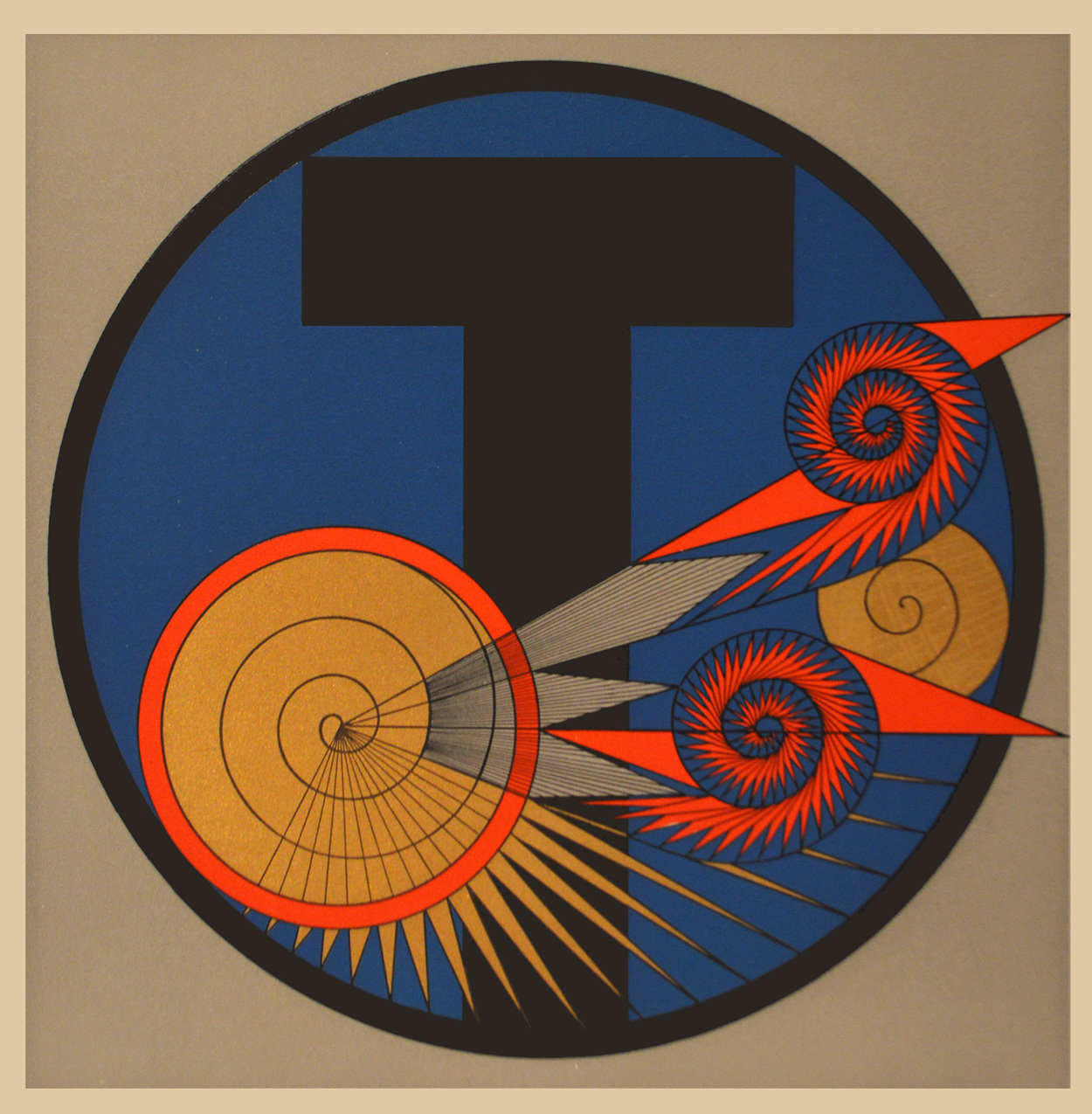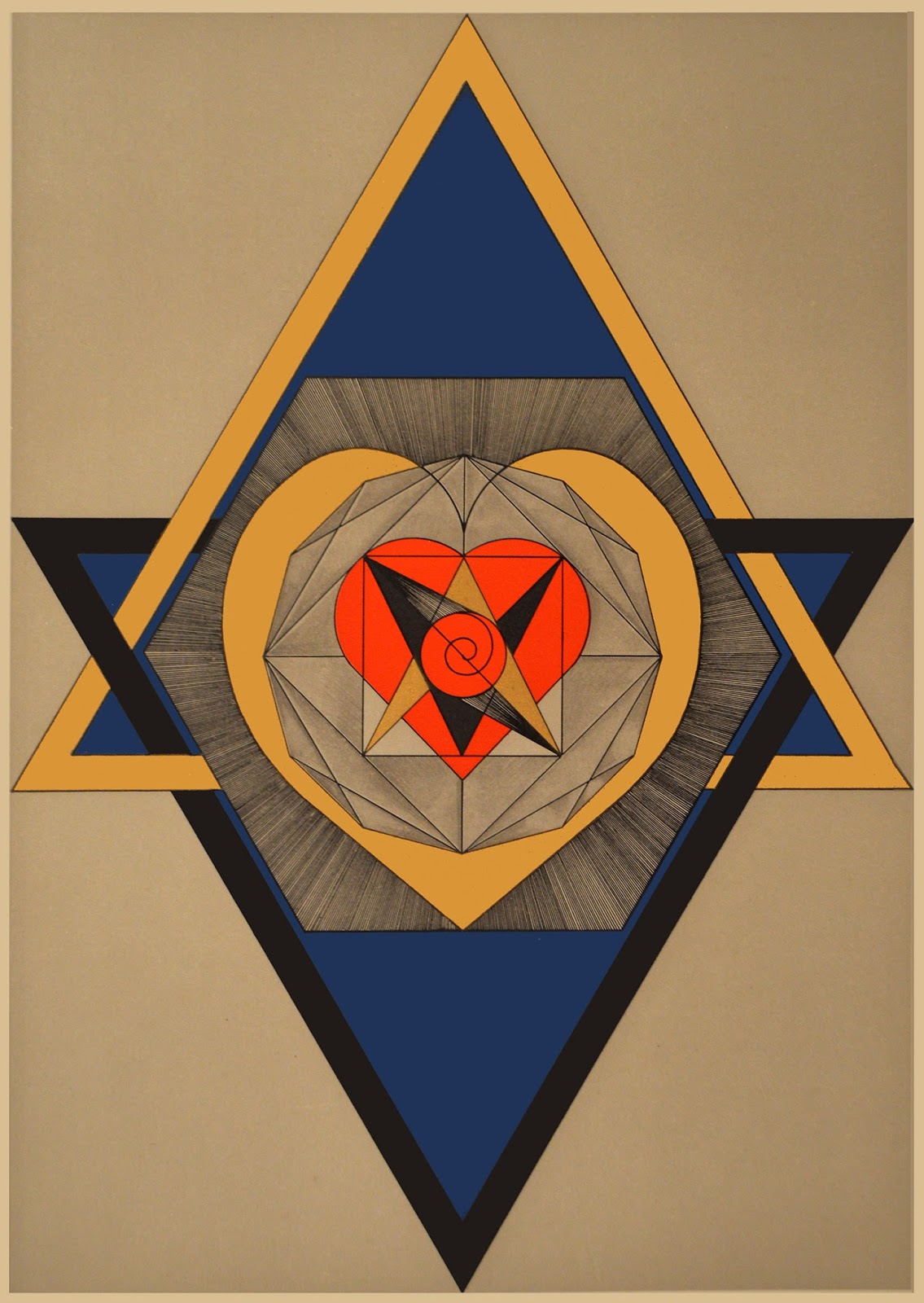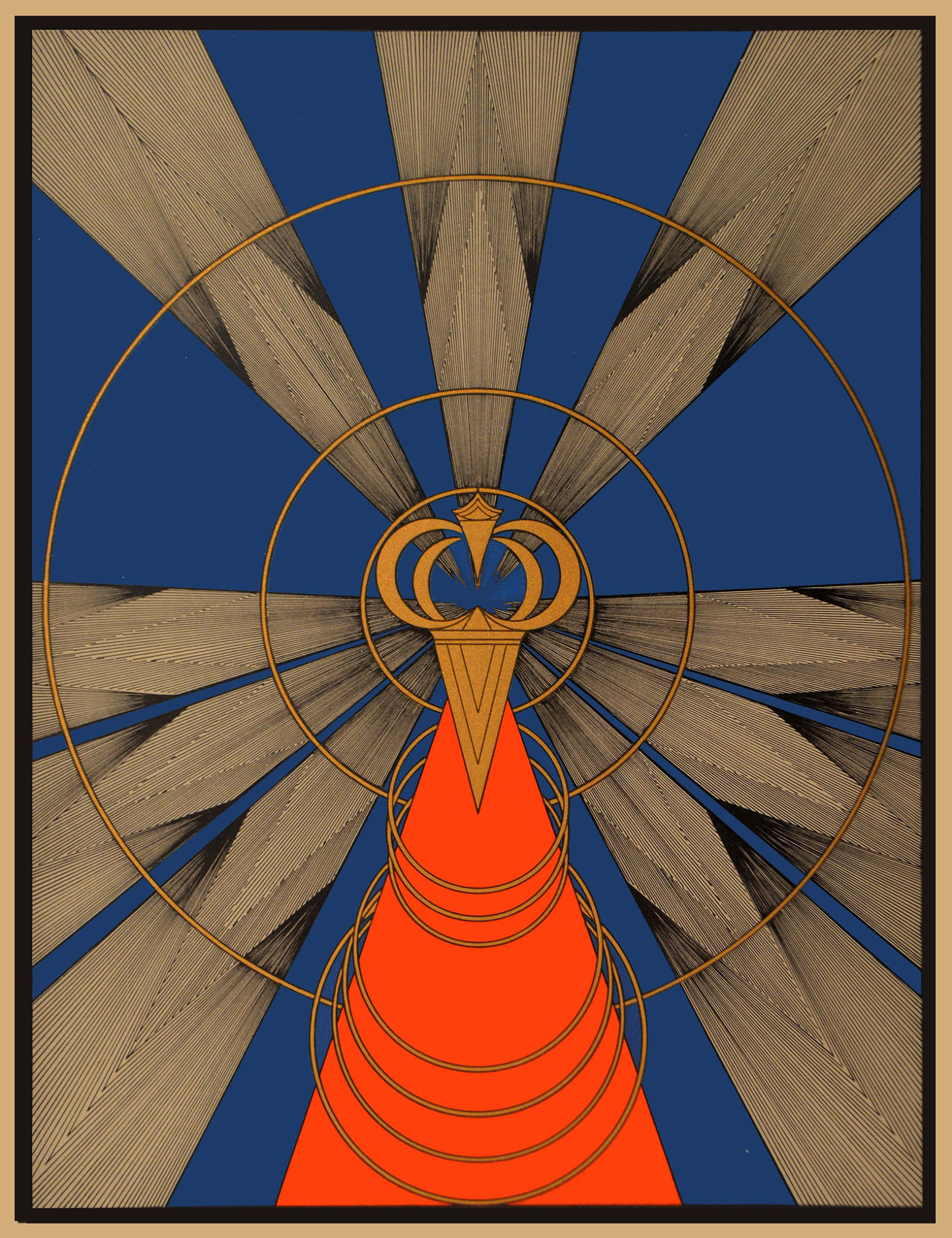theosophy
︎Painting, Tantric, Philosophy
︎ Ventral Is Golden
theosophy
︎Painting, Tantric, Philosophy
︎ Ventral Is Golden
︎ Ventral Is Golden
“Theosophy is who Theosophy does,
not thinks, not studies, not feels,
but does.“ - Helena Blavatsky.
not thinks, not studies, not feels,
but does.“ - Helena Blavatsky.

︎Artworks by Olga Fröbe-Kapteyn.
Founded in New York (1875) the Theosophical movement was primarily seen as a phenomenological approach of uniting religious and scientific thought, and played a huge part in bringing eastern spiritual concepts into western cultures.
The teachings of Theosophy were derived from Helena Blavatsky, a Ukrainian born mystic, a spiritual scientist and 'Mother of the New Age', who's teachings influenced the likes of Rudolph Steiner and Ferdinand de Saussure, as well as prominent artists such as Wassilly Kandinsky, Kasimir Malevich, Piet Mondrian, Hilma af Klint and Olga Fröbe-Kapteyn (who’s work is featured in this article).
Blavatsky had travelled alone and extensively throughout the Americas and Egypt, whilst also spending some years studying occultism in a Tibetan monestery. Through her work, Blavatsky's aim was to globalise a spiritual view, by revivifying the esoteric traditions that were being supressed by the expansion of Christian missionaries, capitalism and the materialistic world view of the sciences.
There was a rising apathy towards religion in the east as the appeal of more westernised, ‘progressive’ ideas, overpowered the superstitious, spiritually-centered schools of thought, and Blavatsky’s work aimed to lay the foundations for a grand synthesis of spiritual beliefs, to be integrated into what we would now regard as a comparative study of religion - a syncretism that resonated particularly with Hinduism, the Vedas, early esotericism of the far east and Neoplatonism of the west.
Esoteric religious groups (what we might call New Age) also proved to be a crucial space for the articulation of alternative socio-political visions, where many occult organisations and masonic practices (such as the Co-masons) became receptive to the suffragette and women’s rights movements - with founder of the Co-Masons (and president of the Theosophical Society) Annie Besant, being a force of political activism for various women’s rights groups.
The affiliations between religion (especially esoteric) and feminist political culture were neither accidental nor idiosyncratic, with prominent women of the nineteenth and early twentieth century either being directly affiliated to the Theosophical movement or at the very least expressing an interest in ‘spiritual matters’ (Dixon, 1962).
The teachings of Theosophy were derived from Helena Blavatsky, a Ukrainian born mystic, a spiritual scientist and 'Mother of the New Age', who's teachings influenced the likes of Rudolph Steiner and Ferdinand de Saussure, as well as prominent artists such as Wassilly Kandinsky, Kasimir Malevich, Piet Mondrian, Hilma af Klint and Olga Fröbe-Kapteyn (who’s work is featured in this article).
Blavatsky had travelled alone and extensively throughout the Americas and Egypt, whilst also spending some years studying occultism in a Tibetan monestery. Through her work, Blavatsky's aim was to globalise a spiritual view, by revivifying the esoteric traditions that were being supressed by the expansion of Christian missionaries, capitalism and the materialistic world view of the sciences.
There was a rising apathy towards religion in the east as the appeal of more westernised, ‘progressive’ ideas, overpowered the superstitious, spiritually-centered schools of thought, and Blavatsky’s work aimed to lay the foundations for a grand synthesis of spiritual beliefs, to be integrated into what we would now regard as a comparative study of religion - a syncretism that resonated particularly with Hinduism, the Vedas, early esotericism of the far east and Neoplatonism of the west.
Esoteric religious groups (what we might call New Age) also proved to be a crucial space for the articulation of alternative socio-political visions, where many occult organisations and masonic practices (such as the Co-masons) became receptive to the suffragette and women’s rights movements - with founder of the Co-Masons (and president of the Theosophical Society) Annie Besant, being a force of political activism for various women’s rights groups.
The affiliations between religion (especially esoteric) and feminist political culture were neither accidental nor idiosyncratic, with prominent women of the nineteenth and early twentieth century either being directly affiliated to the Theosophical movement or at the very least expressing an interest in ‘spiritual matters’ (Dixon, 1962).

“It is an occult law moreover, that no man can rise superior to his individual failings without lifting, be it ever so little, the whole body of which he is an integral part.” - Helena Blavatsky.


At the turn of the century, the divisions between eastern mysticism from a western perspective, and western rationalism from an eastern perspective, characterised the western philosophical desire to turn inwards and the eastern material desire to turn outwards. Although Theosophy existed in a mode of middle-brow oriental idealism, the aspect of spirituality (a philosophy based primarily on apprehending the emotional and non-physical aspects of society) gave credibility to the idea that the east/west classifications were neither wholly supportive, nor oppositional, but could also be partial, fragmented and contradictory. The Theosophical society was a crucial source of unofficial information about India and Sri Lanka at a time when very few people in Europe believed that Buddhism and Hinduism contained ancient truths that imperial Christianity had forgotten.
As her noteriety increased, many started to beleive that Blavatsky was a charlatan, capitalising on the susceptibility of her audience. She was subject to a detailed investigation in 1885 by the Society of Psychical Research, which found her to be an ‘ingenious imposter’ (although it was the initial intention of the society to gather evidence to prove the validity of a spiritual-based science). As public opinion condemned Theosophy as being ‘un-scientific’, ‘un-Christian’ and even ‘un-English’, this did little to deter her followers’ belief that Theosophy spoke to the emotional needs that even the most superstitious of primitive philosophies had evolved to satisfy where material sciences had failed.
As her noteriety increased, many started to beleive that Blavatsky was a charlatan, capitalising on the susceptibility of her audience. She was subject to a detailed investigation in 1885 by the Society of Psychical Research, which found her to be an ‘ingenious imposter’ (although it was the initial intention of the society to gather evidence to prove the validity of a spiritual-based science). As public opinion condemned Theosophy as being ‘un-scientific’, ‘un-Christian’ and even ‘un-English’, this did little to deter her followers’ belief that Theosophy spoke to the emotional needs that even the most superstitious of primitive philosophies had evolved to satisfy where material sciences had failed.


A series of miraculous claims were attributed to Blavatsky throughout her life, from leviation (Aethrobacy - the act of walking on ether) to producing the unearthly sounds of astral bells during her seances. It is also recorded that ectoplasm (ectenic forces) would sometimes emerge from her mouth as a way of communicating with the Mahatmas (the founding spiritual entities of Theosophy), who she claimed to be the source of her esoteric teachings. Transmitted telepathically, via a secret indian brotherhood, taking refuge in Tibet, this claim was made even more mysterious due to Blavatsky’s use of specific terminology (included in an esoteric glossary of religious concepts) known primarily to the initiates of eastern esotericism - information that would have been very difficult for a western woman to acquire at the time.
The investigation into Blavatsky should not suggest that all truth-claims about the nature of the divine are fictive, but to insist that the power relationships embedded in these claims be open to scrutiny. Divine intervention is not a historical fact, but belief in divine intervention has had powerful historical effects. Science and religion are not monolithic packages to be accepted or rejected, but are dense bundles of beliefs and practices that emerge through particular historical contexts (Dixon, 1962).
The investigation into Blavatsky should not suggest that all truth-claims about the nature of the divine are fictive, but to insist that the power relationships embedded in these claims be open to scrutiny. Divine intervention is not a historical fact, but belief in divine intervention has had powerful historical effects. Science and religion are not monolithic packages to be accepted or rejected, but are dense bundles of beliefs and practices that emerge through particular historical contexts (Dixon, 1962).





Further Reading ︎
Artworks by Olga Fröbe-Kapteyn (1930’s).
The Divine Feminine: Theosophy & Feminism in England, Joy Dixon (1962)
Theosophy and the Arts
Theosophical Bodies: Colour, Shape & Emotional Form
The Book of Dzyan
Helena Blavatsky, Biography